|
If you’re a regular Tea Deviant reader you’ve heard me praise Japanese Green Tea Co. many times. Their award winning teas have become a regular in my tea arsenal and when they asked if I wanted to be an affiliate it was easy to say yes. Kei Nishida who started Japanese Green Tea Co. contacted me when he started his new Japanese Coffee Co. and asked if I wanted to try his coffee. Sounds like an adventure to me! Yes this is a tea blog and I am a tea freak, but I like a good cup of coffee too. I’ve experimented with some fun tea and coffee combos and really enjoyed them. What piques my interest about Japanese Coffee Co. is that the coffee they sell is made with a charcoal roasting method called sumiyaki. Sumiyaki - Japanese Charcoal Roasted CoffeeThis was my first time having charcoal roasted, single origin coffee and it was deep and delicious. Ever curious, I wanted to understand what makes sumiyaki coffee different. There are two main ways coffee is roasted: using hot air or using fire. However, the fire method can be achieved through either gas or charcoal fuel. Much like grilling food has a different flavor than cooking on top of a gas range, charcoal roasting coffee imbues it with a delicious light smokiness and depth. Charcoal fire also produces far infrared rays which means more even roasting and less chance of destroying cell structure (which is more likely with gas heat and causes poor flavor). As an added bonus, this method also increases shelf-life by delaying oxidation. Indonesia - Arabica Typica - Mandheling Berkat Lintong Single Origin Premium CoffeeThe first of their coffees I tried was Indonesia - Arabica Typica - Mandheling Berkat Lintong. A hand-picked, screen sorted, single origin coffee from the North Sumatra province of Indonesia. Roast: It is to the darker side of medium Taste: Coffee with personality, full body, slight smokiness, rich and smooth feel with a pleasant bitterness, but I detected no sourness I really enjoyed this coffee even without milk and I usually have milk in my coffee. With milk the personality of the coffee still made itself known which I think is the mark of a great coffee or black tea. I am a fan of cold brew coffee as it is easier on my stomach and I like the smoother flavor. I also like a warm cup of coffee. As I heard that this kind of coffee is great brewed french press style I gave that a go using the following parameters:
Coffee and Tea - Double the AwesomeIn my previous coffee adventure I mixed tea and coffee together in a few ways. This time I decided to try mixing matcha with this Indonesian coffee. Intense! If you like both beverages, their health benefits and the kick they give this combo is for you. I simply added one teaspoon of matcha to one cup of regularly brewed coffee. If you want to start slower try ½ tsp. matcha in ½ cup coffee. There are no awards given for having to be beaten off the ceiling like pinata if you’ve had too much caffeine. If stomach issues are your thing, I suggest making the coffee as a cold brew. The reduction in acid is amazing. Then add matcha. You can also add milk of choice to further cut any acidity, though you do lose a little of the matcha benefit that way. Decaffeinated - Premium Blend Coffee (Colombia, Brazil, Ethiopia)I find decaffeinated coffee, like decaffeinated tea, to taste like punishment, so I avoid them. Most decaffeination methods rob the coffee bean of its unique flavor beauty. I was interested when Kei told me how Sapporo Coffee Kan, their supplier, uses a new German style of decaffeination, liquid dicarboxylic acid extraction. He said this application allows the coffee to retain it’s flavor profile while removing 98% of the caffeine. Hmm. Ok. I’ll bite.
It was probably the best decaffeinated coffee I’ve ever tasted. I would not have known it was decaffeinated had I not been told. My coffee drinking friend agreed. As this is a blend, it brings together the strengths of these regions with a full body, balanced sweetness and bright acidity. If you love coffee but have to reduce your caffeine intake give yourself this gift of flavor sans jolt. The Japanese Coffee Co. site is very thorough. It includes details on the history of this sumiyaki style coffee, the differences between charcoal and gas roasting and tips on how to brew for the best cup. Sapporo Coffee Kan, Japanese Coffee Co.’s supplier, has a 35 year history of charcoal roasting coffee. They introduced this type of roasting to Japan. They source responsibly and have exclusive contracts with the farms that grow the coffee they roast. I love a good taste adventure and this coffee did not disappoint. My relationship with tea is good. Tea knows it is my number one. When I told tea that sometimes I have coffee it didn’t ruin our relationship. So if you are a tea AND coffee enthusiast, I welcome you to this delicious taste rabbit hole! Japanese Coffee Co provided the coffee for this taste adventure I love discovering new tastes and my friend Elexis brought me back this new experience from Peru that I am excited to share with you. Cacao husk tea is the shell of the cacao bean after it has been fermented, dried and roasted and then broken off from the bean itself. The bean is used for our beloved chocolate, but the husks have amazing flavor and nutrients when steeped. 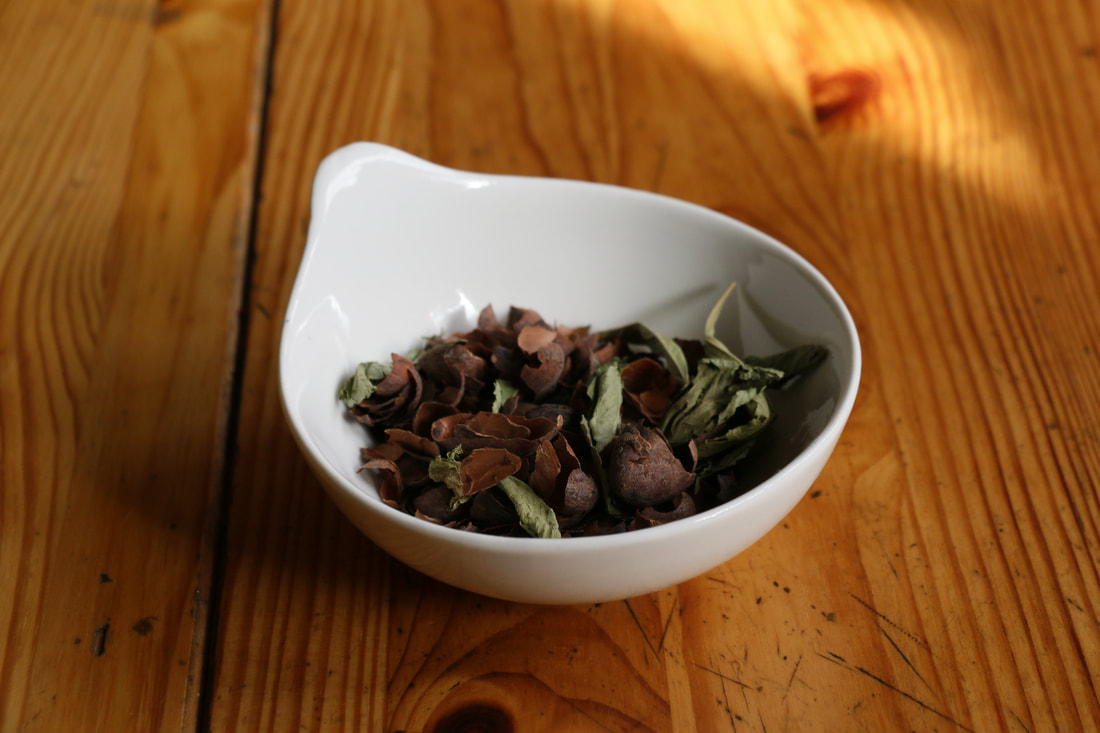 Cacao husks and stevia leaves Cacao husks and stevia leaves The look: Cacao husk tea looks more like potpourri than tea or herb, really. Lightweight, sizeable, medium brown pieces dotted with whole dried stevia leaves. The scent: This is one of those times when the dry, in this case ‘husks’ rather than ‘leaves’, smell the same as the steeped tea does: like a fresh, good quality milk chocolate bar. Other reviews said ‘dark chocolate’, but I smelled milk chocolate. Who knows what you’ll smell when you try it! Fudge? (Elexis has also been offering me great fudge lately, so I have fudge on the brain. I’m hoping it doesn’t go anywhere else. ) 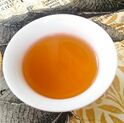 cacao husk tea cacao husk tea The color: It came out a beautiful amber color. Like that prehistoric bug encased in amber in Jurassic Park, but without the bug part. Steeping: There wasn’t any steeping advice on the package. In one way that’s annoying but in another way it leaves the door for experimentation wide open...and of course, internet searching. Generally, most sources said to use boiling water, as with most herbs, and to steep between 5-10 minutes. After experimenting I found I liked the 5-7 minute range best. Taste: It resulted in a soft, aromatic cocoa taste that has just a hint of sour at the end. It even felt a bit creamy even though there is nothing creamy in it. More time brought out more of that sourness and that just isn’t my thing. I tried adding sweetener first and then milk but found I liked it best plain. In the 5 minute steep the sweetener was ok. I used honey once and sugar another time. I think the sugar paired better. Honey is a bit too, “Look at me!” (Yeah, honey, I love ya.) The particular brand I had includes dried stevia leaves for natural sweetness and they perform beautifully. The chocolate scent and flavor is enhanced by the stevia. Those who are used to sugar, honey or just greater sweet taste in general will want to add their sweetener of choice. The milk covered the lovely chocolate flavor rather than enhanced it. Extending the steep time didn’t really change this. It just made the tea more sour instead of more robust. Is it caffeinated?: No, it doesn’t have caffeine like tea or coffee, but like tea it does have theobromine, a slower acting, weaker stimulant. Nutrients/minerals: It is high in magnesium, antioxidants and has the “bliss chemical” anandamide. My internet search also revealed that cacao husk flavor is impacted by it’s origin and conditions like our beloved camelia-sinensis is: “Depending on where the husk is from, there's subtle variation in the taste and aroma of the brew. Each single origin husk taking on its own unique flavour profile.” More options: I mixed the cacao husk with black tea and really liked it. They work well together. Another idea I had but haven’t yet tried is to steep the husks in simmering milk directly to see if a latte-like taste could be achieved. 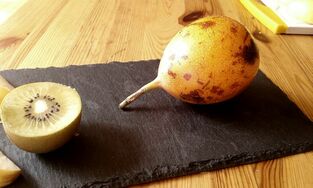 granadilla whole granadilla whole Elexis also told me about a crazy fruit she had in Peru that looked kind of like brains but tasted great. She was surprised to find some at a local market here and got me one so I could have the sweet grey jiggling experience myself. The fruit is called granadilla. Though the look of it on the inside is a bit funky, the great taste is worth it. The flavor reminded me a bit of lychee, perhaps slightly less sweet and the texture like a passion fruit (it is in the same family). It was juicy and had seeds that gave a satisfying crunchy texture. 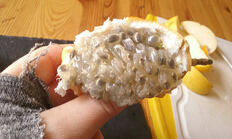 pulp of a granadilla fruit pulp of a granadilla fruit Have you ever had cacao husk tea or a granadilla? Have you ever visited Peru? Let us know. If you’d like to see more, my friend took some great pictures on her trip and you can view them on her Instagram. Wishing you continued adventures in tea and life! this is not a sponsored post 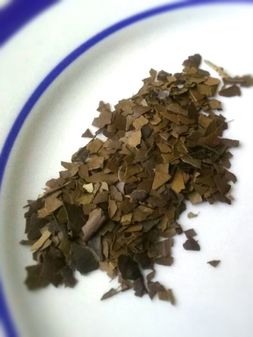 Yaupon leaves remind me of dragon scales Yaupon leaves remind me of dragon scales Yaupon is a sister plant to both yerba maté and guayusa. They are all in the holly family, they all have caffeine, but yaupon (yo-pahn) is the only one native to North America. It is robust and grows wild with many people using it as a hedge or trying to remove it, not knowing it’s history as an ancient revitalizing herb. It’s formal name is Ilex vomitoria. Unfortunate. Kind of like being born with the last name Puke or Dorq or something. Don’t hold the name against the plant as it is much more tasty and positive than its Latin name implies. Apparently it was used in purification by Native Americans, but it is not a vomit-inducing plant. It was a botanist to King George the III that named it in 1789, apparently based on such reports. There are theories that he was ‘influenced’ to do so by the powerful tea trade of the time. Like, maté and guayusa, yaupon gives a good caffeine kick-in-the-pants without jitters or crashes. As I understand it, the caffeine content of yaupon generally falls between black tea and coffee depending where it is grown/harvested and on how strongly it is made (steep time and amount). Like it’s sister herbs it is hard to over steep as it doesn’t suffer from tannin overload like over steeped tea does. It just results in a flavor that is more robust. Like with maté, the leaves can be resteeped throughout the day. Also like maté, which is traditionally drank from hollowed out gourds, yaupon has its own unique traditional vessels. Decorated shells were used as drinking vessels by Native American tribes. You can see a picture of one here . Ecologically yaupon is a great plant to grow. Because it is robust and grows wild land doesn’t need to be cleared to grow it. It can be grown amongst other native plants without disturbing the ecosystem. I tried the yaupon dark which is roasted. The broken leaves reminded me of dragon scales. The flavor moved from a light caramel-like earthiness to a deeper nuttiness when brewed longer. I found it less bitter than maté. The kick was a feeling of alertness without any shaking, crashing or stomach gnawing (anyone else get that from brewed coffee? Ouch.) I only tried it plain and I like it’s natural taste, but I think it could pair with sweetener and/or creamer much like a mate latte does. It can be made to taste just like tea so the choice is yours. Have any of you tried yaupon already? Let us know what you think here or here. Wishing you great adventures in tea. -by Cassandra Vincent This is not a sponsored post. by Cassandra Vincent "After a fairly shaky start to the day, Arthur's mind was beginning to reassemble itself from the shell-shocked fragments the previous day had left him with. He had found a Nutri-Matic machine which had provided him with a plastic cup filled with a liquid that was almost, The first loose leaf tea brand I explored while in school in the US was The Republic of Tea. A friend had shared with me one of their herbal blends, Ginseng Peppermint (yeah, I know it’s not technically tea. We’ll get to that). I was never a fan of mint tisane but found I loved this crazy blend. It was such a surprising well-balanced taste and the ginseng offered a kick in the absence of real ‘tea’ caffeine.
I went on to discover The Republic of Tea Blackberry Sage black tea and Ginger Peach black tea which were regular staples in my cupboard. I appreciated not just their unique blends, but also the loose and bagged options. As I still used bags a lot at this time, for travel especially, I really liked that their bags are unbleached. To me there is a massive difference in taste let alone the gross idea of sucking on something that has been through a bleaching process. When The Republic reached out to me about their new line of herbal tisanes focused on women I was glad to reconnect with the brand. The line is SuperHerb Tea and the one I tried is Nettle. I have had many herbal infusions of a single herb alone and though some are fine this way others do feel like I’m taking medicine either from the blandness or outright yuck taste (valerian – love the effect but it smells like something died in my cup). The Republic of Tea blends peppermint and vanilla with the organic nettle leaves for a light and well-balanced infusion. It has a lovely gentle sweet smell from the vanilla in particular without smelling like a cake or something. It doesn't lure you in with a smell that ends up being far different from the taste - I hate a bait and switch in my tea. Nettle alone is more of a ‘meh’ feeling than a gross one but I prefer some pleasure with my medicinal benefits and this works for me. Like most well-known herbs nettle has been used for ages to aid in a variety of ailments and has been through a battery of scientific tests in the more modern world. Nettle is helpful for kidney function, inflammation, hair growth and allergies. Nettle has been used in women’s health for hundreds of years including supporting pregnancy and fertility. With herbs it is a good idea to make sure your individual needs are met. Like anything else an herb can interact with other medicines/herbs in an undesired way. It’s a good idea to refer to your doctor and do your research. Also, herbs are different for different people based on so many factors outside other medications including body weight. I mean really, is that ‘recommended dosage’ on any bottle meant to apply to both a 120 lb. adult and a 300 lb. adult? Take that into account. I've noticed when I’ve eaten and what I’ve eaten in regard to taking in a supplement has changed my results. I know that herbal ‘teas’ are technically not tea as they do not contain any camellia sinensis leaves. They are ‘tisanes’ – basically herbs steeped in water, sometimes with fruit and/or spices. The etymology of the word goes back to a reference to medicinal barley water (what the Japanese having been drinking for centuries and call mugi-cha, but that’s for another post). I'm a fan of herbal infusions and have used them for years. I think they have a place in the world of tea because of the similar way in which they are prepared for drinking (not manufacture), and how they have become connected in our society. I’ve told tea about my friendship with herbals and tea doesn’t mind. Tea is very secure about its place in my life;). What herbal teas do you have a good relationship with? Share with fellow tea lovers on Twitter and Facebook. |
AuthorCassandra Vincent CategoriesAll Classic Tea Flavored And Funky For Love Of Tea Herbs Infusions Lifestyle And Health Matcha Meditative And ASMR Sessions Recipes And Uses Specialty Tea Brands Spices Tea Accessories Tea Adjacent Tea And... Tea And A Laugh Tea And Art Tea And Holidays Tea And Music Series Tea And TV Tea Around The World Tea Cocktails Tea Events Tea In Film Tea In History Tea Innovations Tea Pros Tea Shops/Shops With Tea Tea Types Teaware |
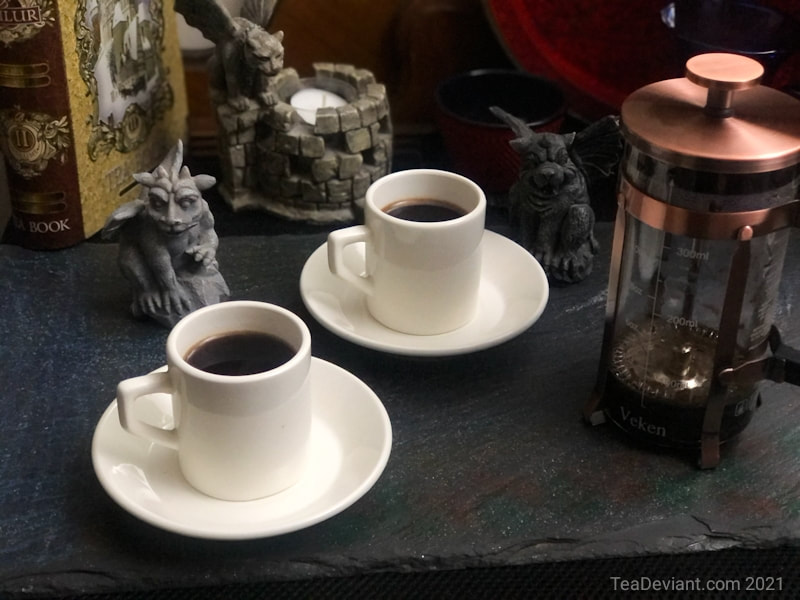
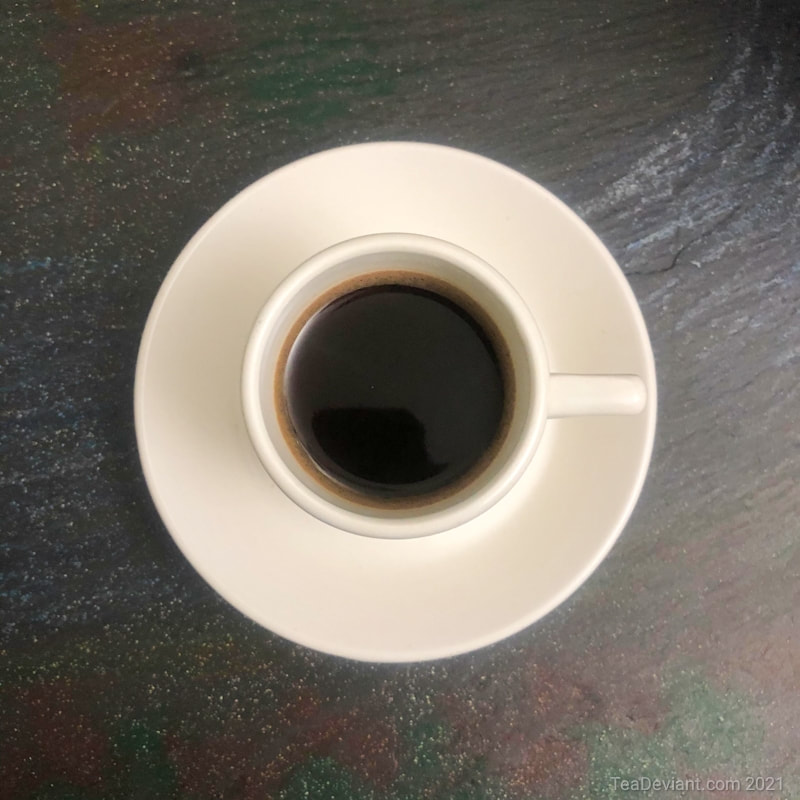
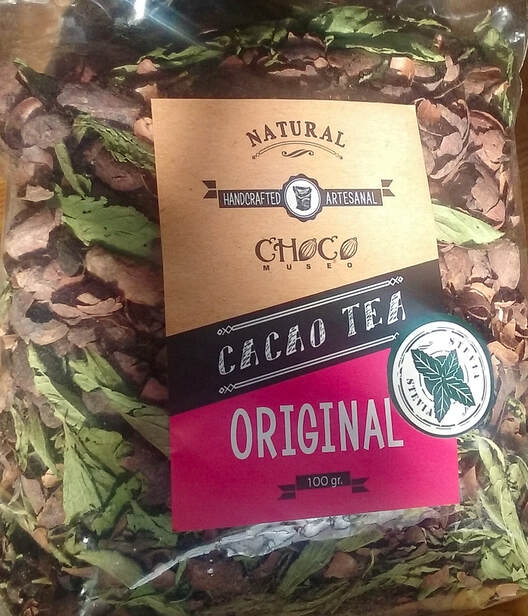
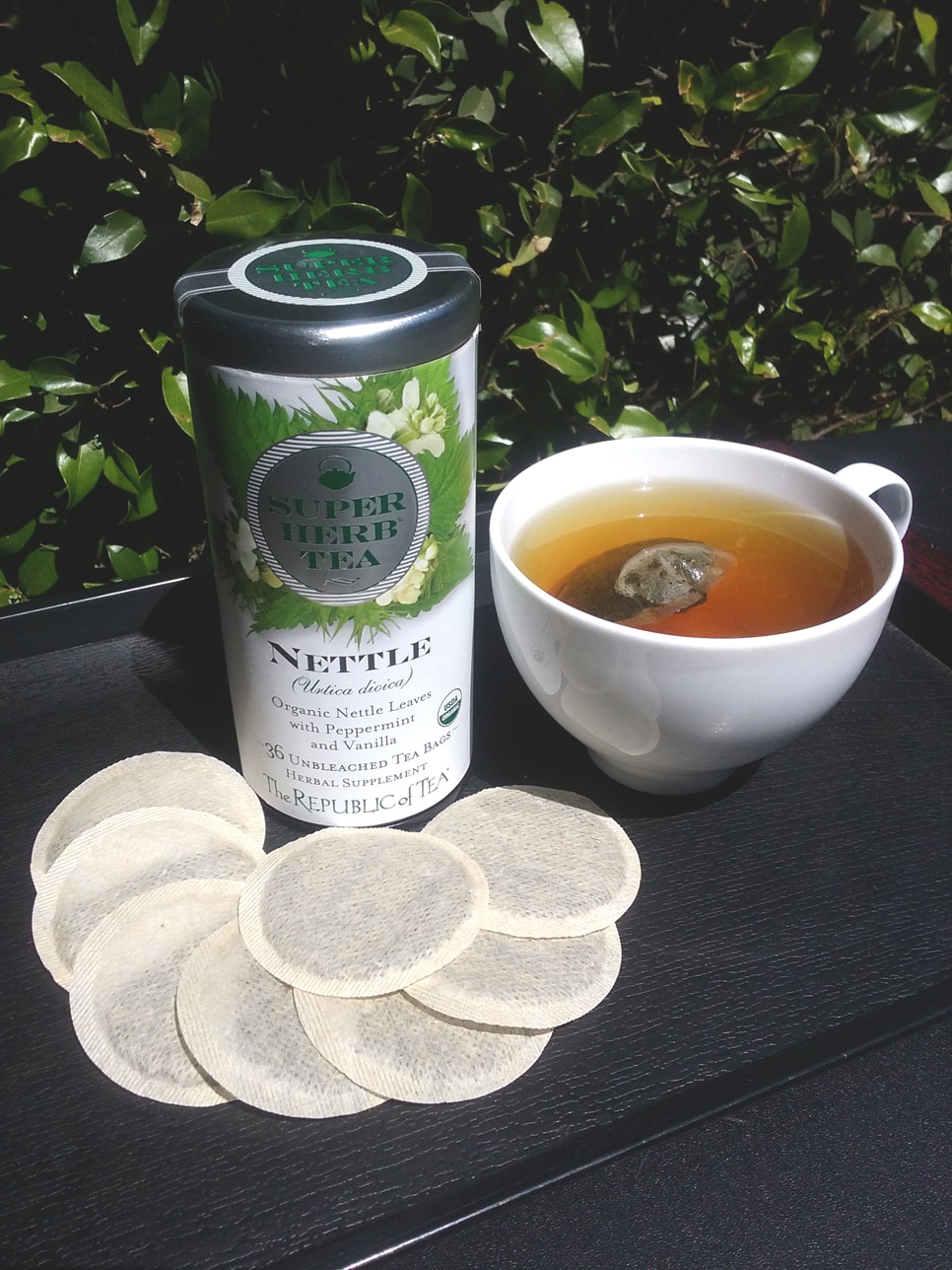
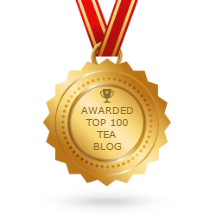
 RSS Feed
RSS Feed